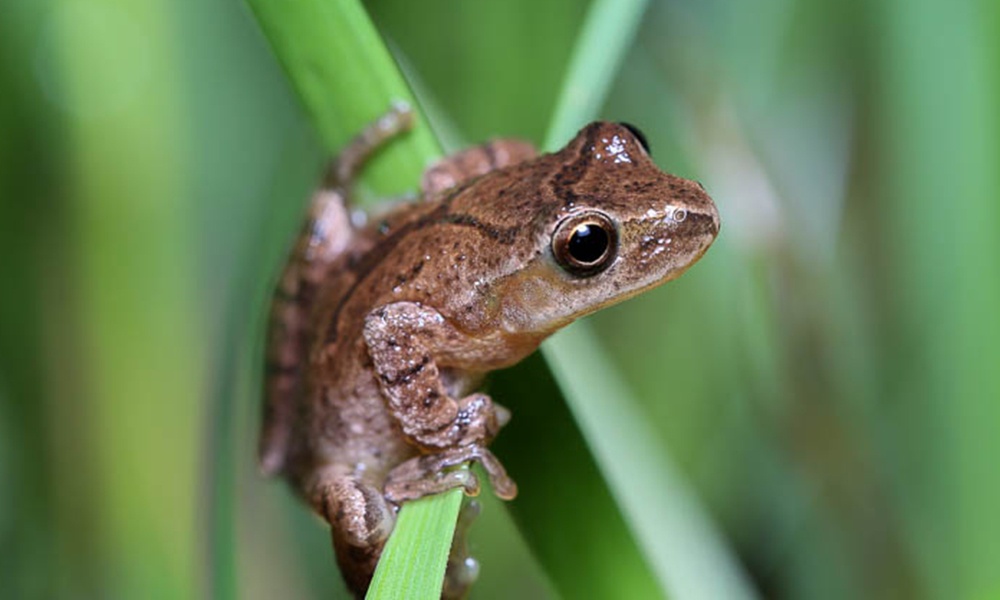
Celebrate National Frog Month in April by getting to know some of the frogs and toads of DuPage County. Amphibians are excellent biological indicators of the wider health of ecosystems. Now is a great time to stop and listen for the true harbingers of spring, and discover the magic of the amphibians.
Did you know?
● There are more than 5,000 species of frogs in the world.
● Some frogs can jump more than 20 times their own body length.
● Frogs don’t drink water with their mouths; they “drink” by absorbing water through their skin.
● You can tell a male frog from a female by looking at their ears (tympanum). Located just behind the eye, if the tympanum is larger than the frog’s eye, it is a male; if it’s smaller, it’s a female.
● A frog’s call is unique to its species, and some frog calls can be heard up to a mile away.
Sources: Smithsonian.com; OneKindPlanet.org
Meet Some of the Frogs and Toads of DuPage County
Chorus Frog
The western chorus frog (Pseudacris triseriata) is the most common frog in DuPage County’s forest preserves. It is one of the first to perform an amphibian aria in the spring, and its creaky call is frequently likened to the sound that a cheap plastic comb makes when a thumb runs down its tines. These calls are impressive for the sheer volume of sound they generate considering that the western chorus frog is only about an inch long. They spend their day among the cattails in quiet marshes.
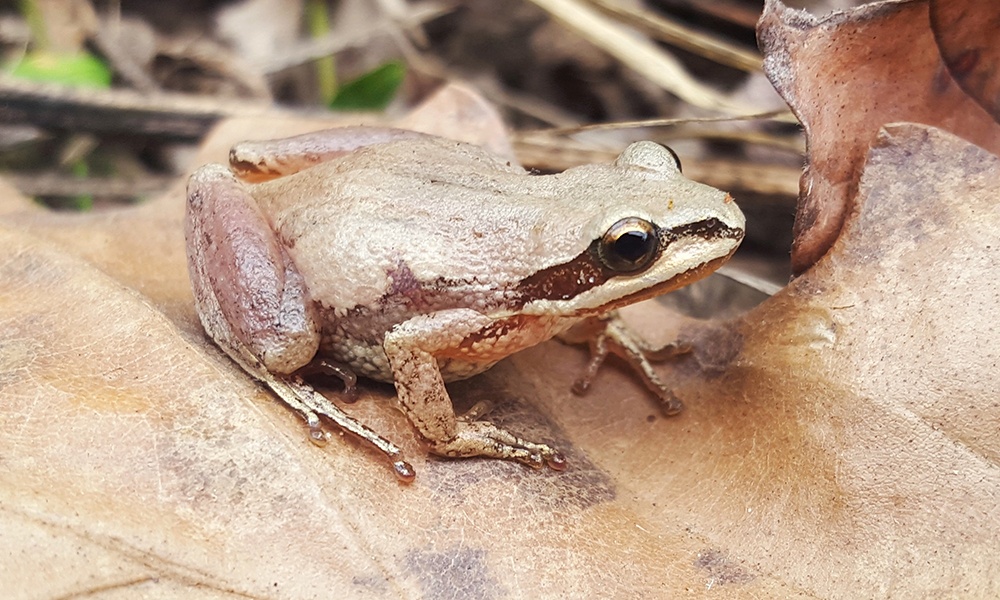
Western chorus frog Image by Andrew DuBois/CC BY-NC 2.0
Northern Leopard Frog
The northern leopard frog (Rana pipiens) can be found in abundance in the marshy and wet meadow communities in DuPage County forest preserves. It vocalizes early in the season and has a subtle call that resembles a soft snore with an occasional chuckle. The leopard frog’s call is quiet enough that it might go completely unnoticed if numerous chorus frogs are calling in the same pond.
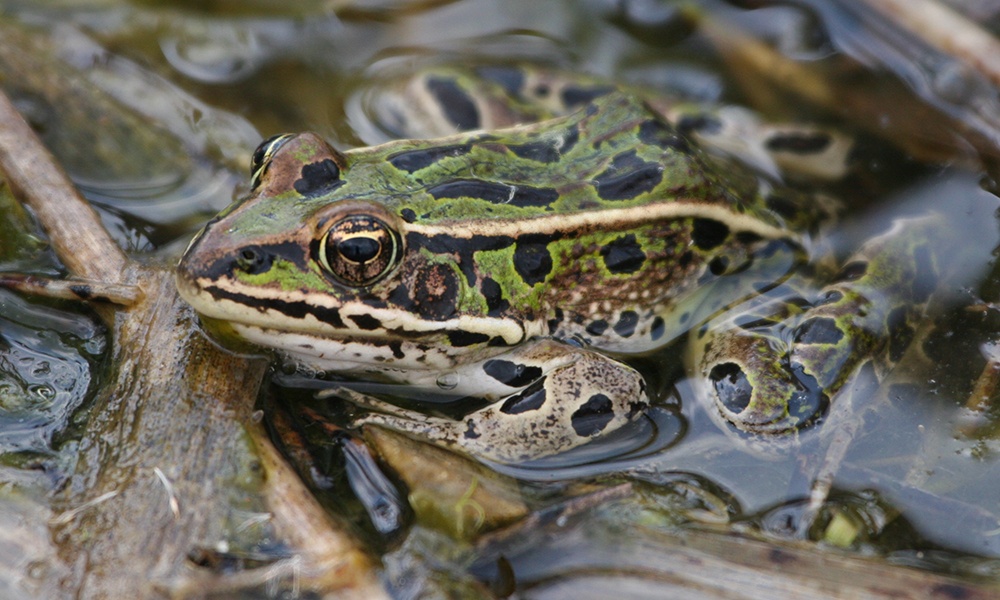
Northern Leopard Frog
Spring Peeper
Spring peepers (Pseudacris crucifer) are the county’s smallest frogs; an adult can fit easily on the face of a nickel. These brown frogs have distinctive “X” marks on their backs, but their size makes them nearly impossible to see in the wild. It’s a woodland species that breeds in suitable, predator-free ponds. People fortunate enough to live near a pristine wetland might be able to hear spring peepers whose call is a shrill “peep.” Like chorus frogs, peepers are about an inch long, but the volume of their calls gives a different impression.
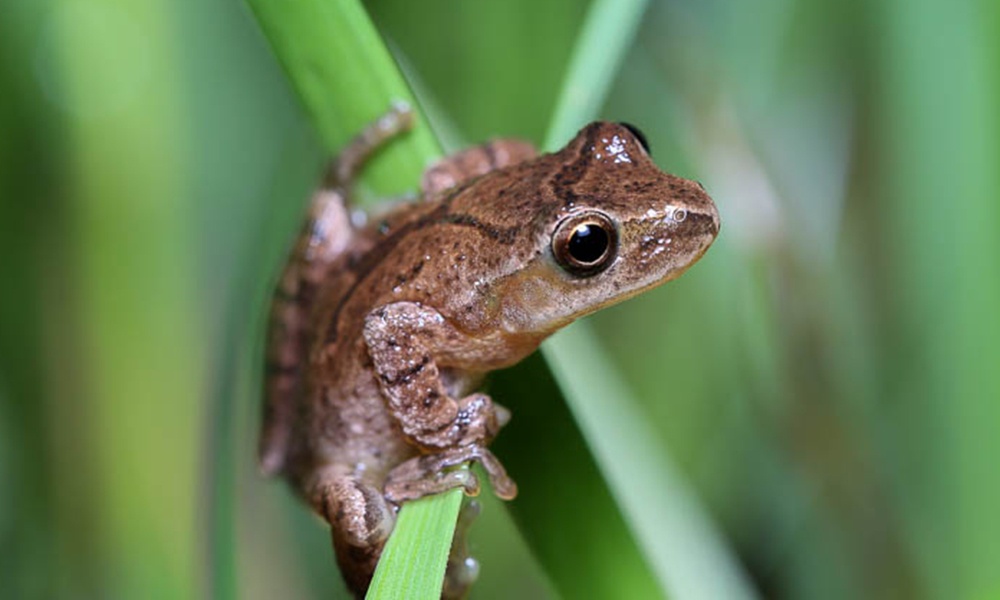
Spring peeper Image by Dave Huth/CC BY-NC 2.0
Eastern Gray & Cope’s Gray Tree Frogs
These frogs are stout-bodied with cryptically colored, often-changing shades of green and gray markings. They are excellent climbers with large toe pads that allow them to adhere to smooth surfaces. As their name suggests, tree frogs inhabit wooded areas that contain quiet, seasonal water for breeding. The only differences between the eastern gray tree frog (Hyla versicolor) and Cope’s gray tree frog (Hyla chrysoscelis) are their chromosome counts and breeding calls, which can be heard In late spring and early summer. The eastern gray tree frog is primarily heard in the Des Plaines River Valley, while the Cope’s gray tree frog is heard in the Fox River watershed.
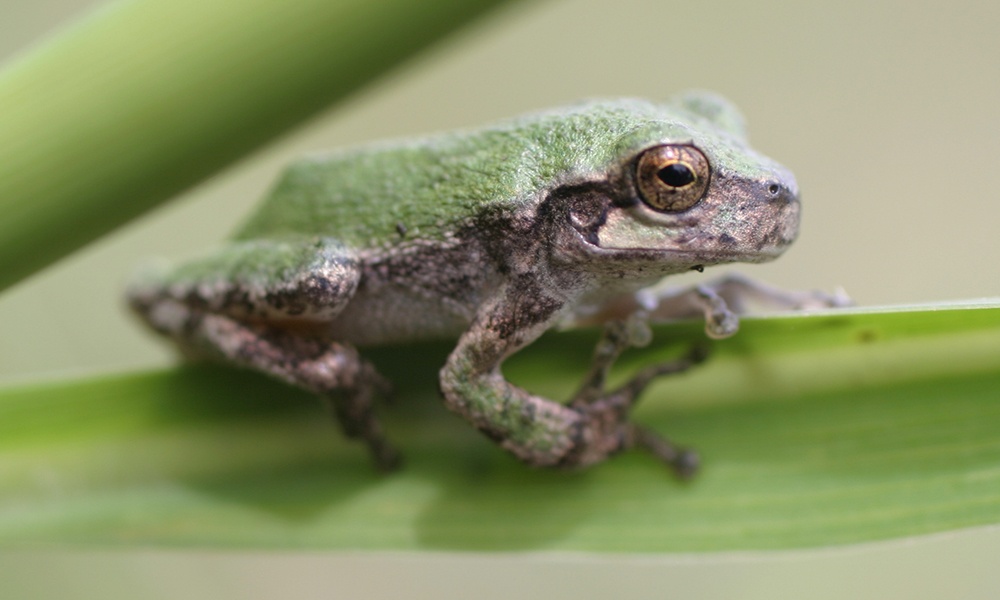
Gray tree frog
American Bullfrog
Bullfrogs (Rana catesbeiana) are the biggest, most aggressive frogs in North America. A hefty adult can be 6 inches long and will eat anything it can catch. Insects and worms are this amphibian’s preferred food, but it has been observed eating rodents and shorebirds. Bullfrogs have adapted well to the suburban DuPage environment, so much so that some researchers believe that regional populations may actually be increasing. Bullfrogs add the bass notes to the chorus and are hard to ignore. Their resonant calls can be heard from a few hundred yards away even when one is performing a solo.
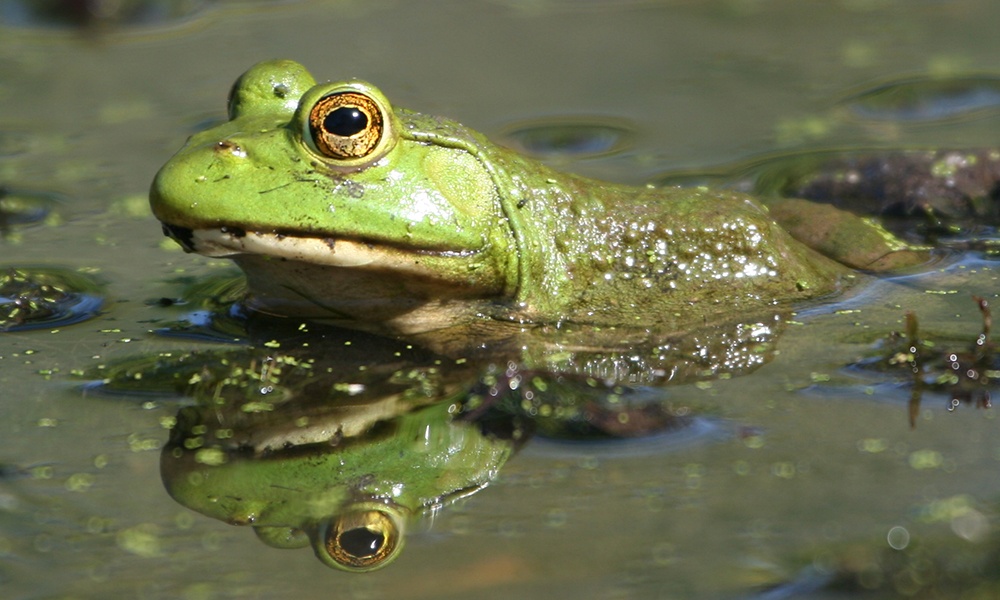
American bullfrog
American Toad
This large gray or brown toad (Bufo americanus) is usually identified by the one or two warts it has on each dark spot on its back. Glands on its skin secrete a poisonous milky fluid that can make predators sick. American toads live in forest and prairies where flooded fields, ditches and other bodies of water are available for breeding. Outside of the breeding season, they live under logs, rocks and leaf litter. They use their sticky tongues to catch and eat insects, earthworms, snails and slugs. Male toads use a monotone trill to try to attract a female.
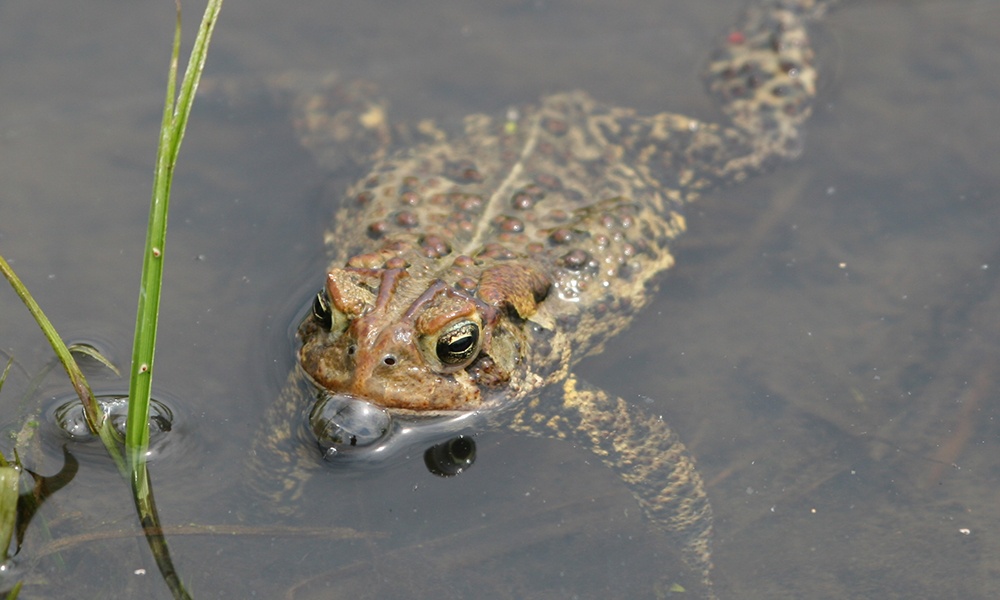
American toad